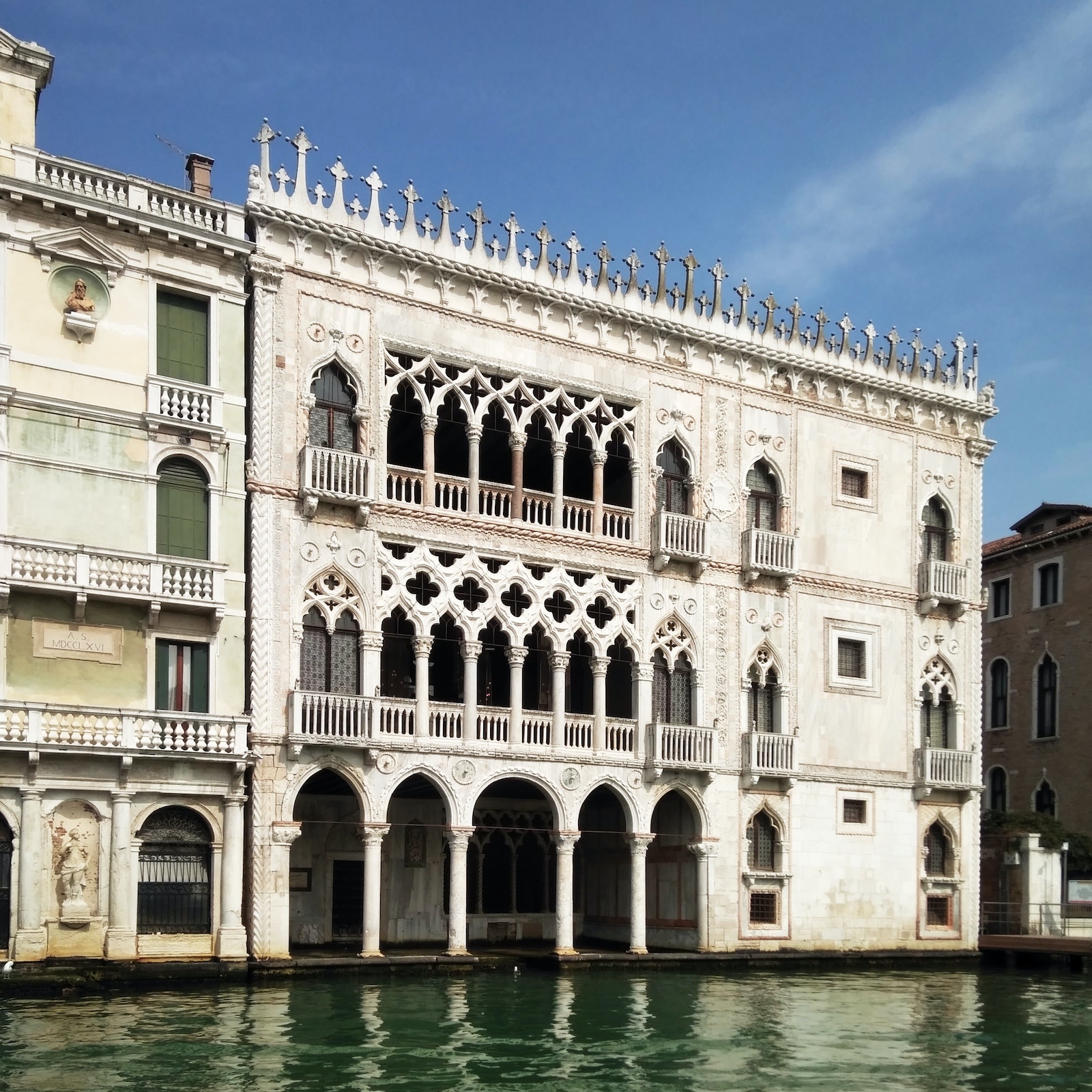
Among the museums in Venice that you must see at least once in your life is the Ca’ d’Oro. The works housed inside are part of the Giorgio Franchetti Gallery collection in Venice and are housed in the rooms of a palace with a long and rich history.
Not one of the most visited museums in Venice, the Ca’ d’Oro Venice nevertheless exhibits some authentic masterpieces worth discovering.
Ca’ d’Oro, the works of the Giorgio Franchetti Gallery in Venice to see
I told the story of the Ca’ d’Oro in the post Ca’ d’Oro, Galleria Giorgio Franchetti. It is a story worth knowing because it began in 1421 and, between changes of ownership, decline and successive attempts to restore the ancient beauty of the palazzo, we arrive at the present day with a story still to be written about this building that is now one of the most beautiful museums overlooking the Grand Canal.
The Giorgio Franchetti Gallery at the Ca’ d’Oro was inaugurated in 1927 and is named after an illustrious nobleman who decided to transform this palace into a place of art and beauty. Many of the works currently housed in the museum were, in fact, purchased by Baron Giorgio Franchetti himself, who donated the entire building and its works to the Italian State.
Book your entrance to the Ca’ d’Oro – Giorgio Franchetti Gallery in Venice and discover the wonders of Venetian art: Ca’ d’Oro Venice Tickets.
Here are the must-see works.
Saint Sebastian by Andrea Mantegna
There is no certain evidence but it is likely that this work by Mantegna is the one that was found in his studio after his death in September 1506.
It is likely that Mantegna’s Saint Sebastian was a painting that the artist had made for Bishop Ludovico Gonzaga, but which entered the collection of Pietro Bembo after the artist’s death.
That the work was intended for a Gonzaga is not surprising, given that Mantegna was the great artist of the Mantuan court and author of the famous Bridal Chamber in the Doge’s Palace in Mantua.
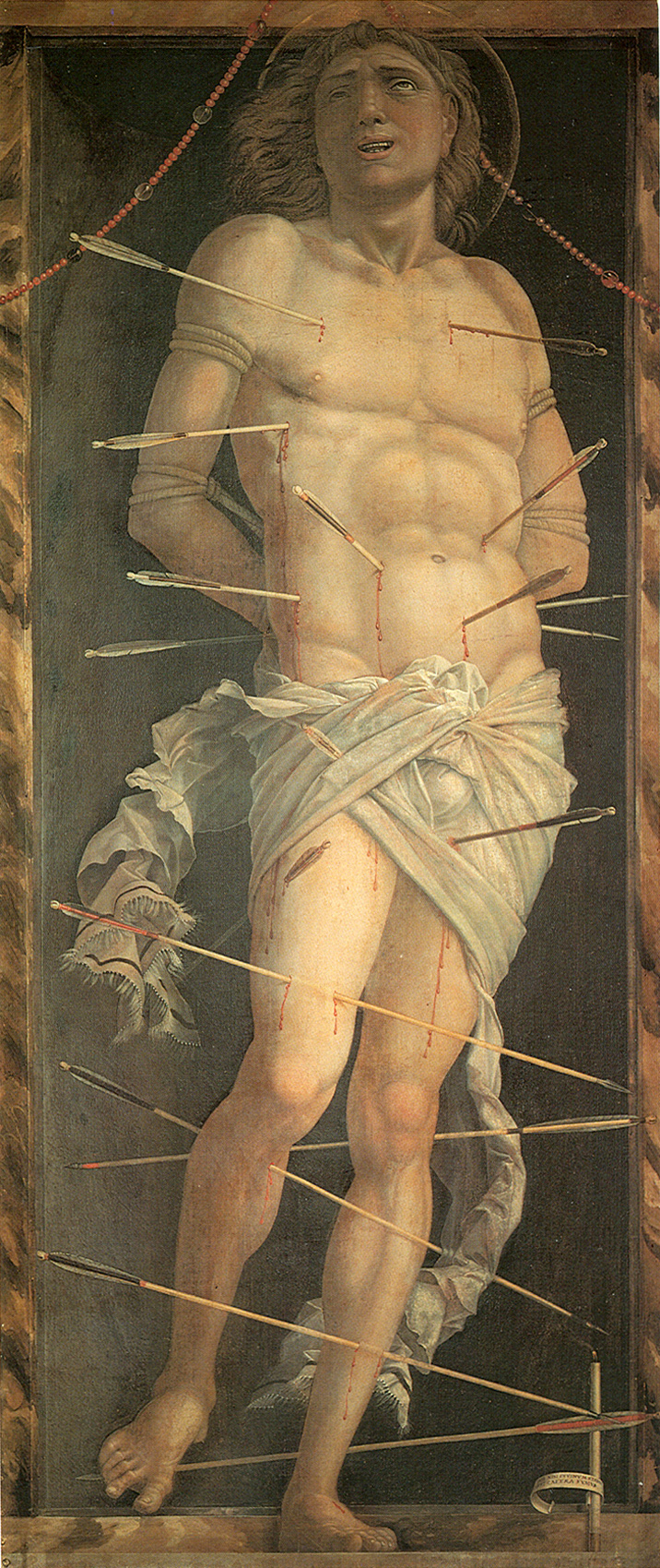
San Sebastiano di Mantegna
His works, such as Mantegna’s Dead Christ exhibited in Brera, are famous for their daring perspectives and Mantegna’s Saint Sebastian, preserved at the Ca’ d’Oro, also confirms this habit of the artist in surprising the observer. The saint seems to step outside the painting as his left foot rests on a plane outside the niche while his right foot is still raised in the movement. In this painting, Saint Sebastian is depicted in a dynamic position, which makes this late work a masterpiece and almost a spiritual testament to Mantegna’s life and works.
Titian’s Judith
Titian’s Judith preserved at the Ca’ d’Oro is actually composed of the fresco fragments that once covered the outer side of the Fondaco dei Tedeschi at Rialto.
The young Titian had dedicated himself to that undertaking together with his great friend, the famous Giorgione, author of The Tempest, who had painted the frescoes on the main façade towards the Grand Canal. It was a very important commission for the two young artists because they had to create the frescoes in one of the most important and symbolic places in the city, the commercial centre of Venice, overlooking the Rialto Bridge.
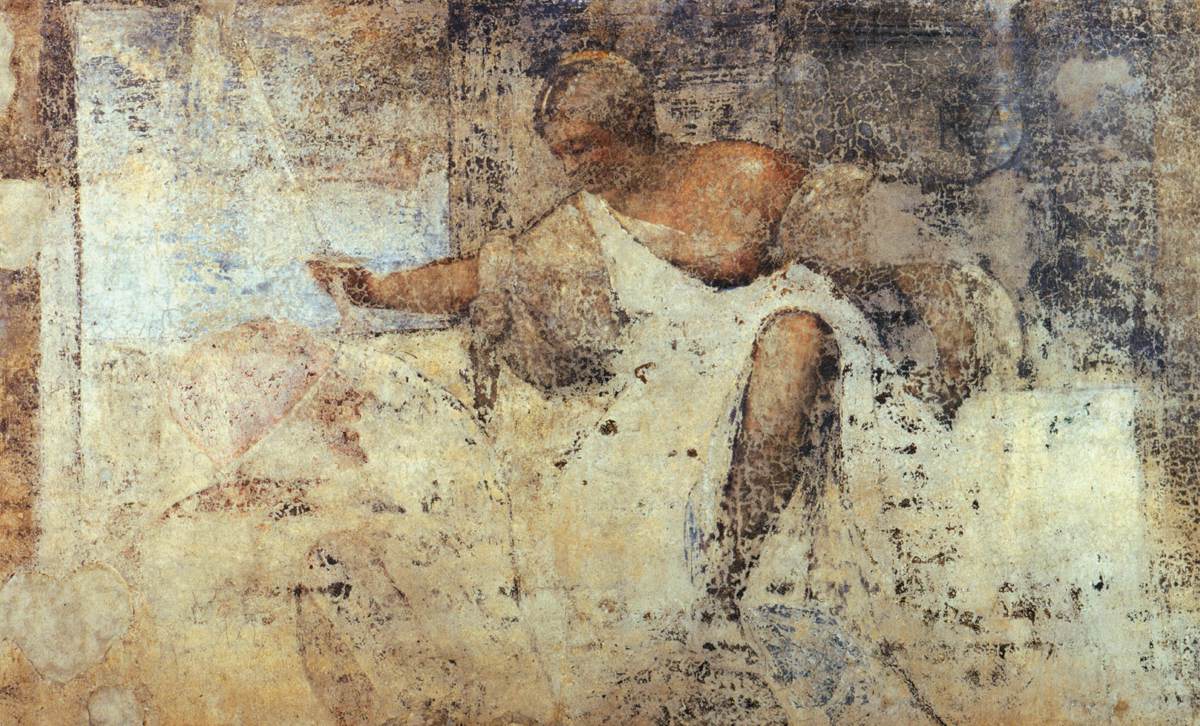
Giuditta di Tiziano
Although the work is now almost unreadable, it shows how the young Titian was already so confident in his means of expression that he produced what his contemporaries already described as a masterpiece.
The environmental characteristics of Venice did not allow this work to be preserved in its entirety, but observing the few remaining details allows us to understand the greatness of this artist and anticipates the great masterpieces he later produced, such as the Venus of Urbino.
Venus at the Mirror by Titian
In this painting by Titian, the protagonist is Venus, the goddess of Love and Beauty, depicted in the act of covering herself. The subject is not new and can be described as: Venus Pudica.
Venus is probably observing herself in a mirror. A mirror that lies beyond the curtain.
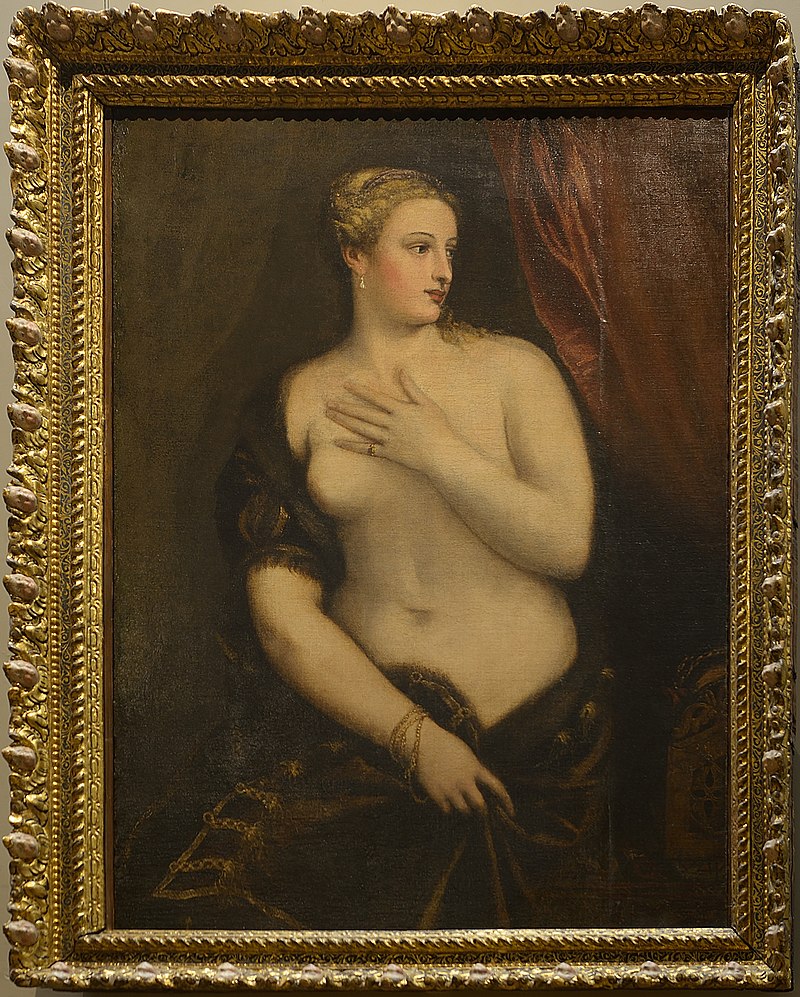
Venere allo Specchio, Tiziano
In reality, this woman could be Venus, but she could also be a Venetian noblewoman of the 16th century, trying to cover herself with a refined dress. The refined hairstyle, precious jewellery and facial make-up provide us with clear information about this woman’s social class.
Moreover, this woman, or Venus, is one of the many women Titian made famous and immortal by the artist.
The Annunciation by Carpaccio
This work comes from the Scuola Piccola degli Albanesi in Venice for which Carpaccio made a cycle of canvases.
Scholars agree that this work was not made directly by Carpaccio but by his workshop assistants.
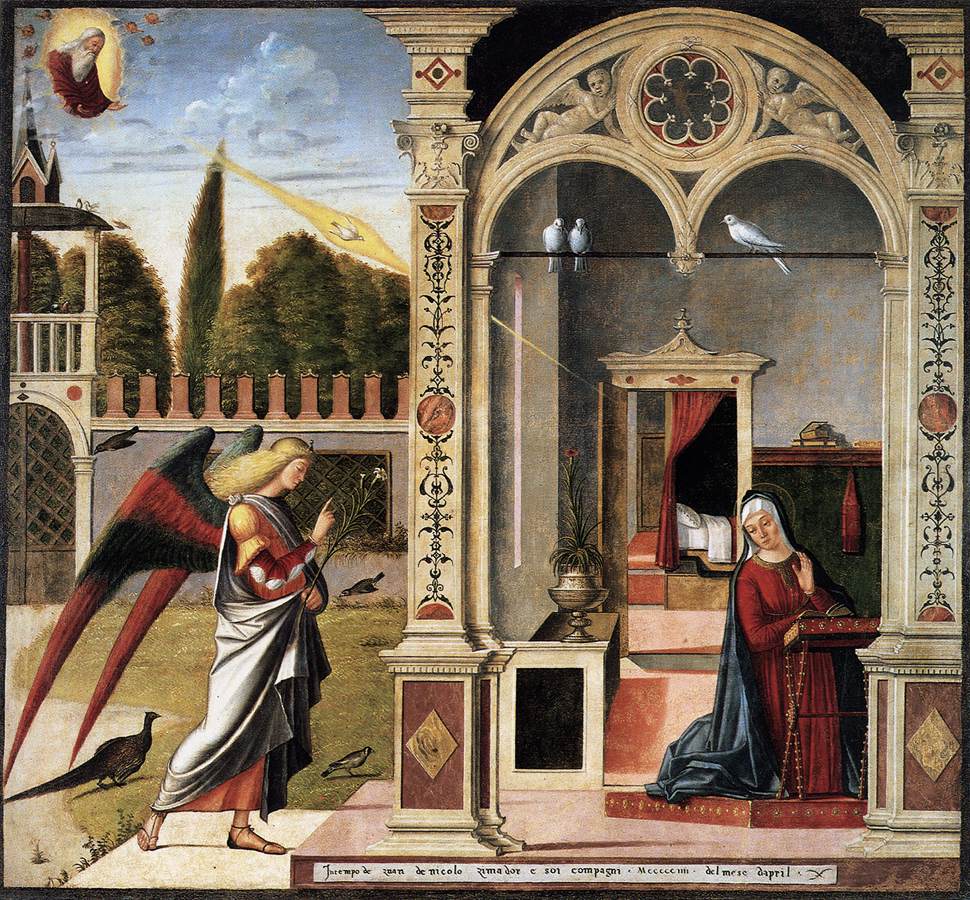
Annunciazione, Carpaccio
Carpaccio’s Annunciation was executed in 1504, a period when Carpaccio’s workshop boasted numerous major commissions and employed many assistants to fulfil all requests. It is likely that the master supervised all the works made during this period, including this one, and only intervened in the final part, i.e. before delivery to the commissioners.
Looking for a dose of art then during your stay in Venice? Then don’t miss the Fortuny Museum or Ca’ Rezzonico, the Museum of 18th century Venice and all the other extraordinary museums in the city. Find out how to plan your visit by reading the guide on what to see in Venice, which contains the list of museums, exhibitions and places you should definitely see

